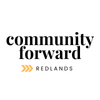Hidden in plain sight: Homeless children and youth in Redlands
Why this group is often undercounted and a look at the network of community members working to identify, support, and house children and youth in need.

Why this group is often undercounted and a look at the network of community members working to identify, support, and house children and youth in need.
REDLANDS, Calif. - The number of homeless children and youth is extremely undercounted in communities across the country, according to advocates. Unlike the urban adult homeless population, youth often don’t identify themselves as homeless and live hidden from the public eye.
There are an estimated 1.6 and 2.1 million homeless youth in the United States between the ages of 12-24. Researchers note this number is likely missing many children who aren’t in a shelter or car but who are temporarily living with relatives or friends.
In Redlands too, the official numbers don’t reflect the true extent of the issue, but by looking at the work done by community members and schools, the numbers are striking.
Youth Hope, a local non-profit that serves homeless, runaway, trafficked, and underserved youth in Redlands and the surrounding area, houses approximately 100 youth between the ages of 14-24 each year.
Redlands Unified School District identified 2,424 homeless students enrolled in the 2021-22 school year. That’s about 12% of the students. By comparison, San Bernardino City Unified estimates its homeless student population at 7%. Statewide about 3% of enrolled students have been identified as homeless.
Students in this category include those who “lack a fixed, regular, and adequate nighttime residence.” These students experience a range of unstable living conditions from living with a relative due to the loss of their own family home to living in motels, shelters, cars, or encampments.
In this newsletter, we’re looking at why this group is often under-counted and the impact homelessness and housing instability can have on a child’s future. We’ll also look at the network of community members - from school counselors and city services to caring residents and therapy dogs - working together to identify, support, and house children and youth in need.
Uncovering need through connection and care
It started with: “I hate Christmas and I only came because you asked me to.”
A young woman at the very first Youth Hope Foundation Christmas party was one of 38 kids who showed up at the doors of the local non-profit dedicated to serving unhoused, runaway trafficked and under-served youth in Redlands and the surrounding area.
Each December, Youth Hope invites the youth they work with on the street for a special meal and celebration. At the end of the party, each of their guests receives a new pair of shoes (or if they’re coming for the first time can put in an order for a new pair). Executive Director of Youth Hope Heidi Mayer said it’s a tradition that each young person gets the exact shoe style and color they ask for. The youth are often amazed when the shoes fit.
Mayer said, it's a practical gift but also makes young people feel loved. This was the case for that young woman who said she hated Christmas and reluctantly came to the party. By the end, she told Mayer, “this is the first gift I’ve ever received in my entire life.”
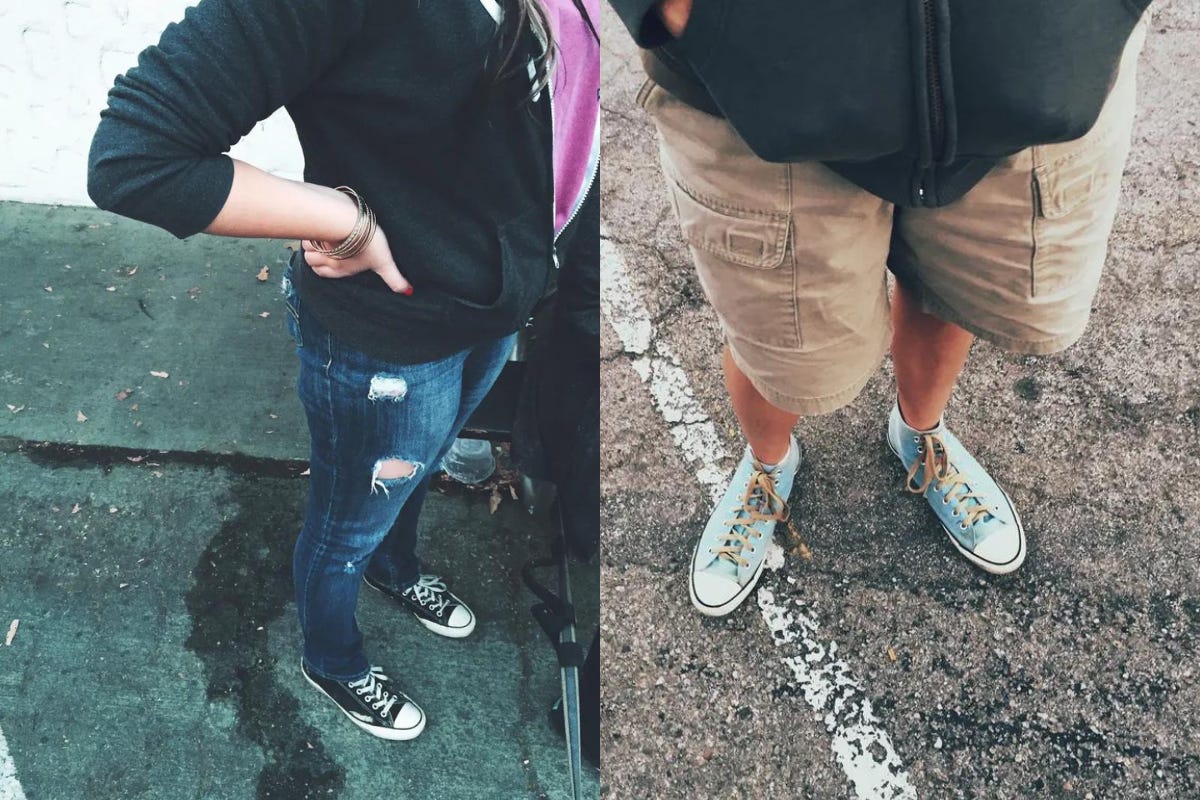
Mayer, who started the organization in 2009, said her goal is to make young people feel loved and cared for while also addressing their housing and health needs. The organization’s volunteers help an average of 9 youth a month find stable housing largely through their street outreach program.
Homeless youth often do not fit the common perception of homeless. They are not holding signs or carrying their belongings. A difficult part of serving this population is being able to identify youth in need to then offer support.
“The thing is with youth, they don’t want to be counted. They don't want to look like a homeless person. They want to look like everyone else,” explained Mayer.
According to national surveys, unaccompanied homeless youth say the reason for their homelessness or episodes of running away is overwhelmingly credited to family-based conflicts such as abuse, neglect, drug or alcohol addiction, or rejection over pregnancy or sexual orientation.
Homeless youth, who are often couch surfing, will tell Mayer ‘everything is fine’ as long as there is a roof over their head at night.
“It’s super dangerous for our females if they sleep on the streets. So they will do just about anything - including sex - so they have a roof over their head. Which is extremely dangerous,” warned Mayer.
This is why building relationships is so vital. In one case, it took almost two years for a 15-year-old girl Mayer was working with to confess she’d been couch surfing. Between staying at friends' or men's houses or finding a relative to take her in, she hid the fact she did not have a stable home. Mayer explained that the girl’s mom, who gave birth at 15, was not interested in being involved, and after about 2 years when the girl had exhausted all her options, “she broke down and said ‘I can’t do this anymore, and I am on the streets and I’m not okay.’” Youth Hope was able to work with Community Services for Families (CSF) to get her off the streets and into a foster home. According to Mayer, she calls her foster parent “mom” and is doing well.
Mayer says without building that relationship, no one would have known the teen was homeless.
Youth Hope estimates that they have assisted more than 4,000 homeless, runaway, trafficked, and underserved youth in the last 13 years. When the pandemic hit in 2020, the organization began reaching out to youth who were no longer able or willing to come to their drop-in center. Since then, the group has been bringing food to Sylvan park twice a day to feed and connect with the youth who gather. More than 400 youth and young adults are expected at two different Youth Hope Christmas parties this month.
To address the need, the City of Redlands recently approved $70,000 from Coronavirus State and Local Fiscal Recovery Funds to support the Youth Hope street outreach program.
Mayer mentioned multiple times during our conversation that her work is only possible through the support of city services, partnerships with other organizations, and residents who donate and volunteer. One of those partners is the Redlands Unified School District.
School Safety Net
The Covid-19 pandemic pointedly revealed how public schools provide more than education. When schools closed to protect public health, many children lost access to healthy food and a safe and engaging place to be while parents work.
With the recent rise in homelessness seen across the state, schools continue to be a sanctuary for children and their families in need. The McKinney Vento Act requires public schools to have someone in place to identify and support homeless students with transportation and other resources. A recent state law requiring schools to conduct an annual survey has made reporting on the number of homeless students more reliable.
Nationally, Black and Brown students experience homelessness at higher rates. Here in Redlands, Hispanic and Latino students make up slightly more than 50% of enrollment but 65% of homeless students according to 2021-22 enrollment data.
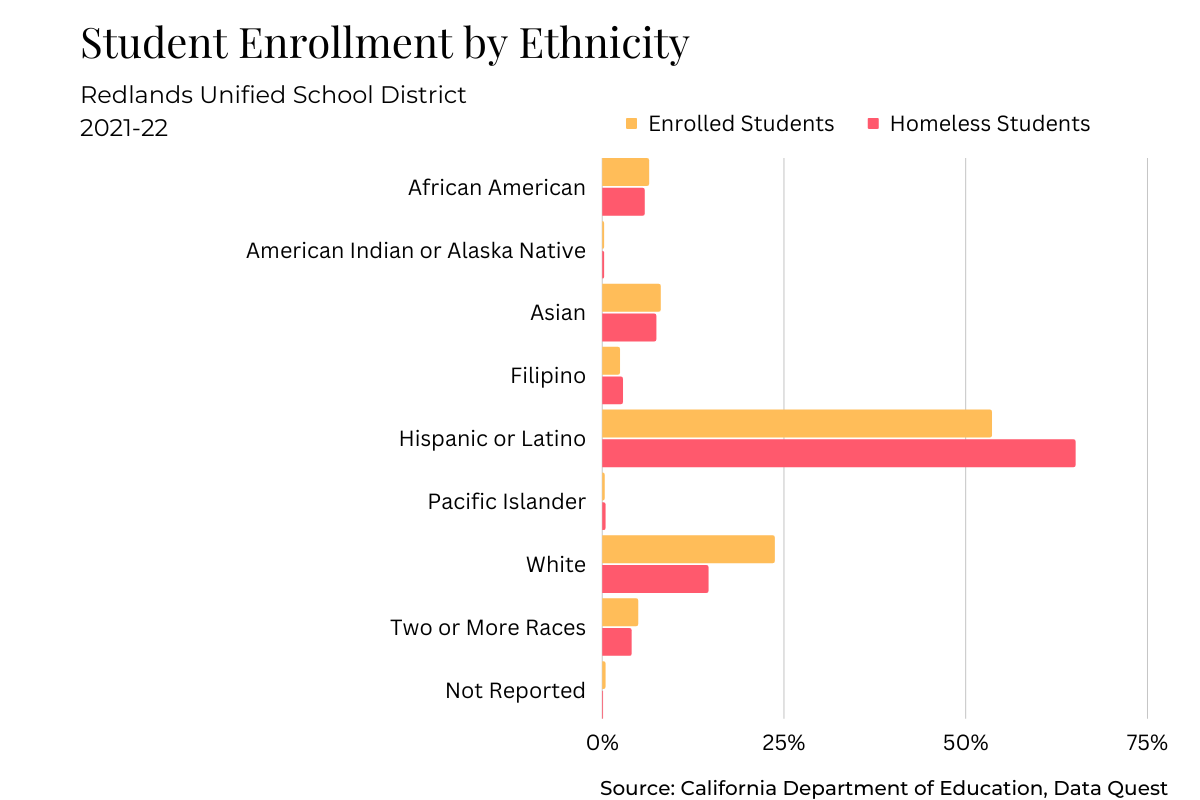
Whether it’s making sure students have shoes that fit, a reliable ride to school, or securing after-school care, counsels at the Redlands Unified School District are often the first point of contact for families and children facing homelessness.
I spoke to Kingsbury Elementary School Counselor Deb Dennis. The kids call her Ms. Deb. I asked her about the growing needs of homeless children in our community.
“I’ve had more than I’ve ever had. It’s a lot but I’m happy to take care of them,” she told me. Since the start of the Covid-19 pandemic, the number of homeless and foster youth at her elementary school has nearly doubled. In a normal year, she would work with about 10 homeless and foster youth. This year there are 18 - most of whom are living in a car, hotel, or encampment with their families.
Ms. Deb says each child has a unique story and each family has its own needs. She works one-on-one with these students to ensure they make it to school each morning and are able to learn alongside their peers, for a moment leaving behind the struggles they face outside the walls of the school.
Ms. Deb and other counselors connect students with community resources for housing, food, hygiene, and tutoring. They can take advantage of school resources including, Bear Closet for shoes and clothes, and referrals to the Building a Generation Program, or ASES after-school program.
Hidden Toll of Homelessness
Another way homeless students at Redlands elementary schools are being helped is through the Inland Empire Therapy Dogs R.E.A.D. Program. The program is used to improve reading skills for children who are delayed or reluctant readers by giving them a chance to read with the most friendly (and furriest) of listeners.
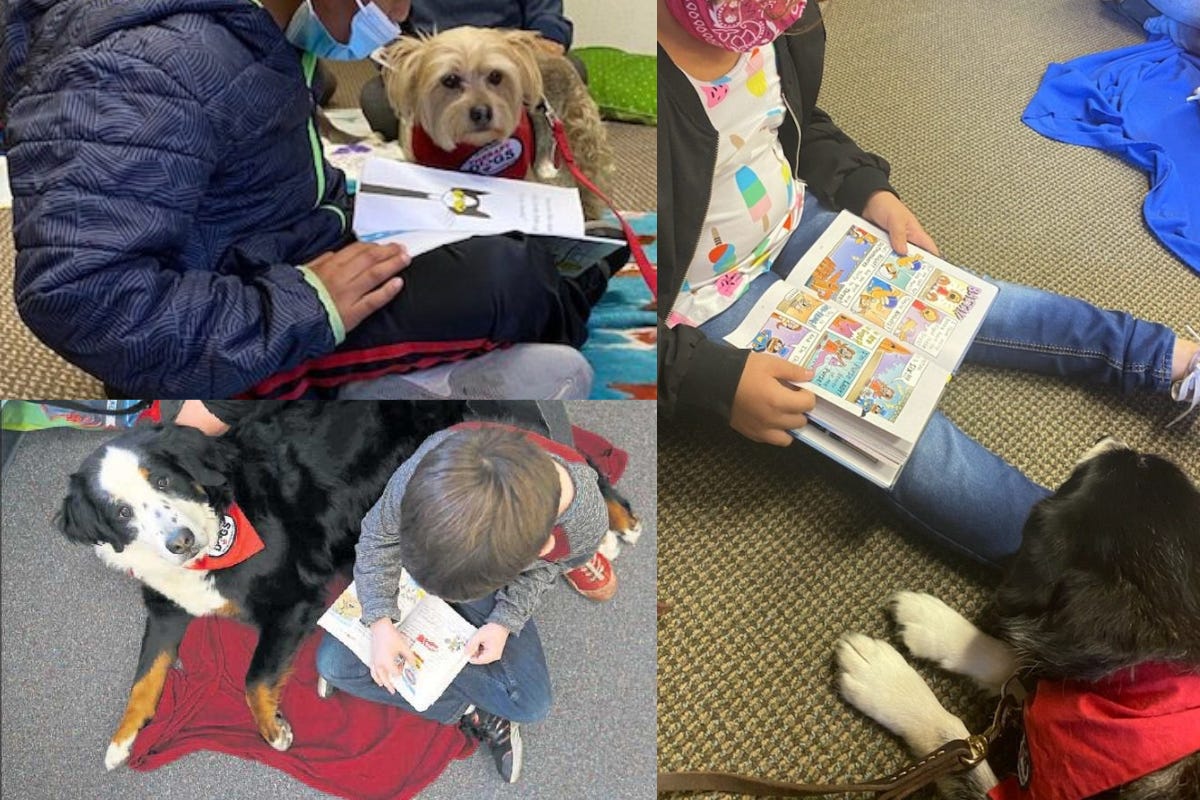
One recent program session was filled with only foster and homeless youth. “I’ve never filled the whole session with homeless and foster youth before but our numbers are so much that’s what I was able to do,” Ms. Deb recalled.
Often, these students fall behind because they are moving around more and miss school as a result. And it's not just Kingsbury. I spoke with Vivian Crowe, who runs the non-profit Inland Empire Therapy Dogs, and she said she’s seen an increased need in multiple schools. So much so that they’ve shifted their R.E.A.D. Program to help more homeless and foster youth in schools across the district.
“Now with all the strife we are facing, there is more need to help the foster and homeless youth so the program has changed to focus on that population,” Crowe explained.
In addition to giving the students extra time to practice a valuable skill, time with the therapy dogs help soothe some of the trauma these children face being in unstable housing.
At another RUSD elementary school, the Inland Empire Therapy Dogs work with students experiencing the most severe cases of trauma. Crowe shared a story of one child who was suffering from selective mutism. This condition - where a person is unable to speak in certain social situations - often stems from anxiety and trauma. In a recent session with the therapy dogs, Crowe explained how the child, upon playing with the dog, started to speak and laugh. It was then the teacher explained this was the first time the student spoke since the start of school.
Unstable Housing Linked to Learning Loss
Following two years of disrupted learning, a statewide decline in test scores was seen this past fall. The following chart illustrates the gap in test scores between economically disadvantaged students and homeless students compared to students who are not economically disadvantaged.
In both cases, economically disadvantaged and homeless students scored nearly 30 points below their peers not facing financial hardships.
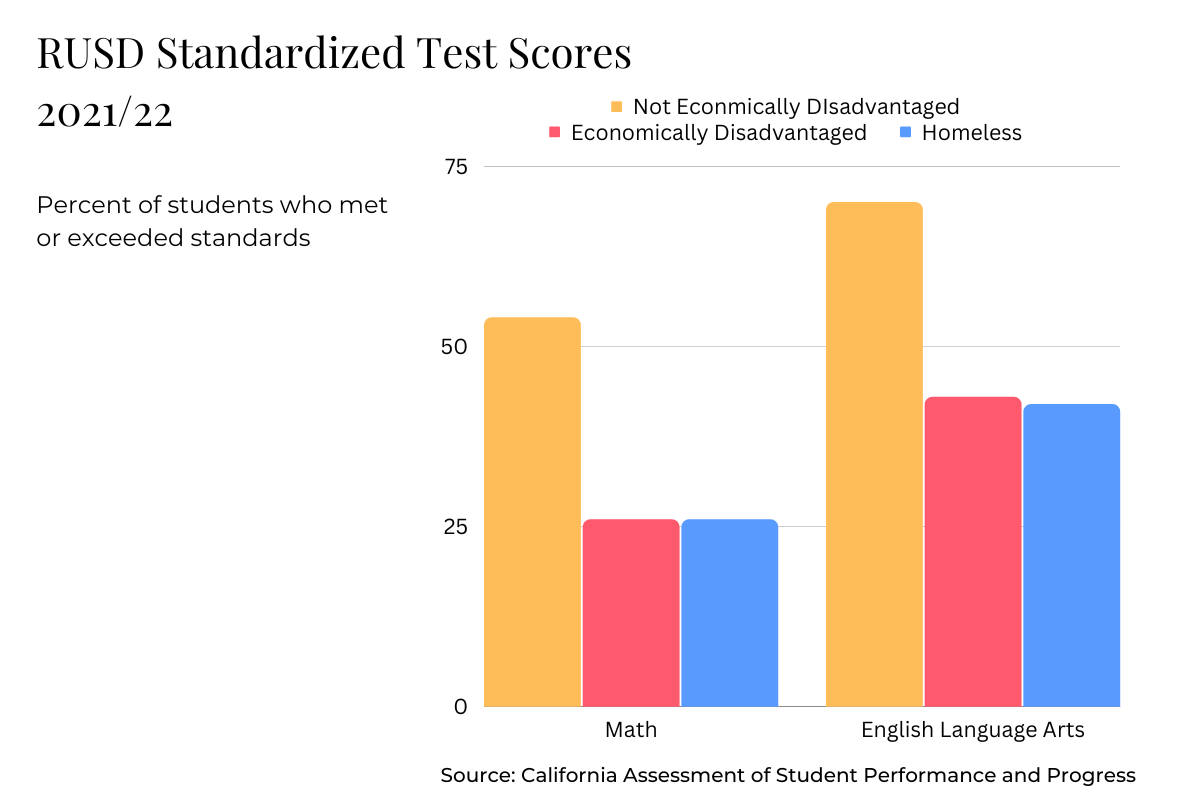
Across the entire district, 71% of students in Redlands Unified School District are considered “economically disadvantaged.” A significant increase from 2017, when this population made up 57% of the student population.
School counselors are one of the many resources Redlands Unified School District directs toward improving learning outcomes for disadvantaged students. The Local Control Accountability Plan allocates $250M in programs focused on supporting low-income, homeless, English learners, and foster youth. The majority of this funding is used to employ personnel, like school counselors.
Ms. Deb explained, “We do whatever we can, what we've always done, to try to get these kids back up to speed.”
A Community That Cares
Despite the growing challenges of caring for homeless youth, Mayer, the Youth Hoper Director, has been encouraged and inspired by the community’s response to the crisis. Mayer said since she started working with youth on the street 20 years ago she has seen a huge increase in interest from the community.
“Our community is amazing,” whether it’s support from the Redlands Unified School District, residents, the Police Department, or healthcare professionals, “people are ready to help and they do help,” said Mayer.
If you would like to help homeless and foster youth in our community this holiday season, we’ve gathered some links and resources below:
Give Clothing
- Donate a pair of shoes to Youth Hope by purchasing a $55 pair from Active Ride Shop or donating online.
- Donate shoes or new underwear and socks to the Kingsbury Bear Closet.
Volunteer
- Volunteer with your dog at the Inland Empire Therapy Dogs. Training is free. The next session is Tuesday, Dec. 13 from 5:30 - 7:00 at the Redlands Senior Center. Find more information about the next training session here.
- Volunteer with Youth Hope for outreach or to hang out with the youth at the drop-in center. You can contact them here.
Mayer said what’s so special about our community is this: “The youth know, these are people in our community that love them and care about them. When they leave, they truly feel love. Honestly and truthfully, people care and people want to make a difference.”
*Updated: This article has been updated to correct the name of the organization “YouthHope Foundation,” in a previous version it was referred to as Youth Hope.






